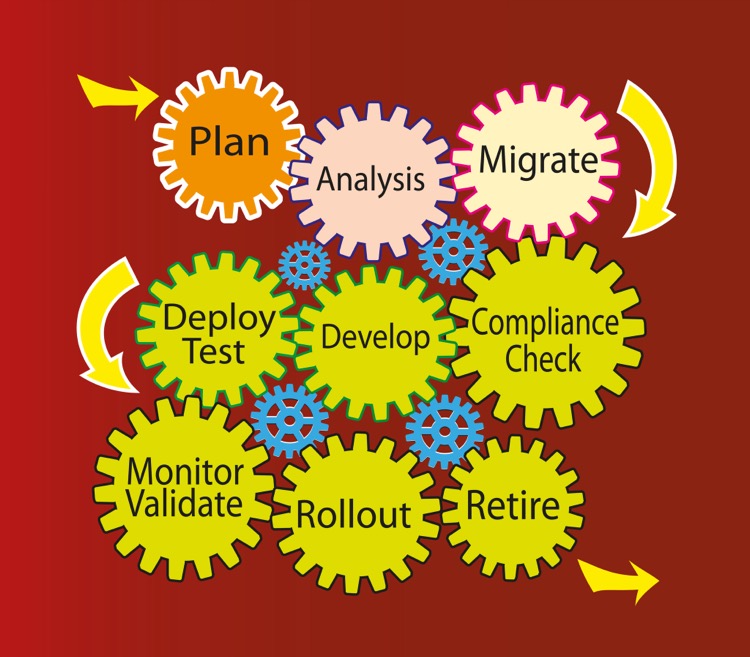
Comprehensive ALM Guide for Microsoft Power Platform
power virtual agent | power platform | azure | principal architect
Unlock Microsofts Power Platform ALM efficiencies with our comprehensive guide to using pipelines, a lifeline for developers and admin.
Mastering Application LifeCycle Management (ALM) for the Microsoft 365 Power Platform is an essential skill for modern organizations. Holger Imbery, the Cognitive Services Ninja, presents the fourth part in a blog series, providing readers with a deep dive into utilizing ALM with the Power Platform and Dynamics 365. This part focuses on pipelines, making ALM processes more efficient and user-friendly across different roles within an organization.

By incorporating pipelines, Power Platform enhances ALM automation, continuous integration, and delivery. This advancement significantly reduces the expertise and effort traditionally required for effective ALM. As a benefit, administrators can set up automated deployment paths quickly, while developers and makers gain an intuitive experience to deploy solutions with ease using Developer Tools.
Pipelines offer centralized management, allowing administrators to oversee large-scale projects with minimal effort. This centralized approach leads to a lower total cost of ownership, streamlined change management processes, and time savings. Businesses can scale their ALM practices over time, enhancing their growth with improved compliance, safety, and automation.
Makers can now use pre-configured pipelines, streamlining deployments within their development environments. This approach removes the need for deep ALM knowledge, automates the validation of solution deployments, and simplifies the process of connecting applications to the correct data sources, enhancing success rates and productivity.
Understanding Microsoft Power Platform ALM
Microsoft's Power Platform offers a suite of tools aimed at enhancing business productivity through app development, data analysis, and business process automation. ALM within this platform is critical for maintaining the lifecycle of these applications, from inception through development, testing, and production. By utilizing features such as Power Platform Pipelines, organizations can streamline their ALM processes, making them more efficient and user-friendly for all parties involved. With the integration of ALM practices, companies can ensure that their applications are robust, reliable, and deliver value quickly to their users.

Learn about Mastering ALM (Application LifeCycle Management) for Microsoft Power Platform: A Comprehensive Guide
Understanding ALM for Microsoft Power Platform: A Simplified Guide
ALM, or Application Lifecycle Management, is a vital aspect of the success of any app. In the context of Microsoft Power Platforms, ALM becomes even more critical. The concept of ALM for the Microsoft Power Platform revolves around managing and optimizing an app's lifecycle from its development stage, through its testing phase, and finally to its production.
Power Platforms seek to make ALM more accessible for both Power Platform and Dynamics 365 clients by incorporating ALM automation and continuous integration and delivery (CI/CD) capabilities in a user-friendly manner. The process is designed to be beneficial for all creators, administrators, and developers.
Thanks to the incorporation of this concept, significant reductions have been experienced in the effort and specialized knowledge required to benefit from automated ALM processes efficiently. The utility has paved the way for those in varying roles, such as administrators, creators, and developers.
The tool which buttresses these processes is referred to as Pipelines. Using Pipelines, administrators can set up automated deployment stations in minutes rather than days or weeks. Working with Pipelines gives makers an intuitive user experience that enables swift solutions deployment, and professional developers can extend and execute pipelines through the Power Platform command line interface.
The goal behind pipelines is to offer a centralized platform for managing developer-led projects. Administrators can use Pipelines to manage and oversee projects on a large scale with minimal effort. Added advantages for admins include significant reductions in total ownership cost, effortless implementation of secure and customized change management processes across your organization or team, and scaling ALM at your own pace.
Pipelines stand firmly as a handy tool in the Power Platform. They offer a huge advantage for admins, makers, and developers, enhancing productivity by easing the management processes of app development. With pipelines, the ALM process becomes easier, faster, and more streamlined, saving time and making your Power Platform apps more efficient.
Demystifying Pipelines in Microsoft Power Platform
In the Microsoft Power Platform, pipelines play a vital role in managing the Application LifeCycle (ALM). Primarily, they assist in automating the ALM processes of Power Platform and Dynamics 365. This automation includes ALM operations and CI/CD capabilities deployment, easing the process for all stakeholders, including creators, administrators, and developers.
The introduction of pipelines has considerably reduced the required effort and expertise previously needed to automate ALM processes efficiently within your team or organization. Notwithstanding the role one plays in the process, be it as an administrator, a creator, or a developer, pipelines promise to streamline the whole process.
For administrators, pipelines present an easy means to set up automated deployment stages in significantly less time than it used to take. Makers gain an intuitive user experience that ensures the swift deployment of solutions. On the other hand, developers are provided with a platform that they can extend and execute using Power Platform's command line interface.
This user-friendly approach is the main idea behind pipelines. It creates an environment that enables administrators to centrally manage and supervise developer-led projects on a large scale. They offer a host of benefits, including the reduction in total ownership cost, the effortless implementation of secure changes across the organization, and the ability to scale ALM in line with your evolving business needs.
Pipelines are undoubtedly an integral part of Microsoft Power Platform's ALM process. Essentially they provide an easy, swift way to manage app development, saving teams valuable time and improving the overall efficiency of the process.
More links on about Mastering ALM (Application LifeCycle Management) for Microsoft Power Platform: A Comprehensive Guide
- About ALM with Power Platform
- Learn how to implement application lifecycle management (ALM), including governance, development, and maintenance, using Microsoft Power Platform.
- Comprehensive ALM Guide for Microsoft Power Platform ...
- Nov 2, 2023 — Master the Application Lifecycle Management (ALM) for Microsoft Power Platform with our comprehensive guide. Learn efficient app development ...
- Holger Imbery on LinkedIn: Mastering ALM (Application ...
- In application development and management, a comprehensive understanding and mastery of Application Lifecycle Management (ALM) for the Microsoft Power ...
Keywords
ALM Microsoft Power Platform, Mastering ALM, Application LifeCycle Management Guide, ALM for Microsoft, Power Platform ALM, Comprehensive ALM Guide, ALM application guide, Microsoft Power Platform management, Mastering Application LifeCycle Management, Comprehensive Microsoft Power Guide